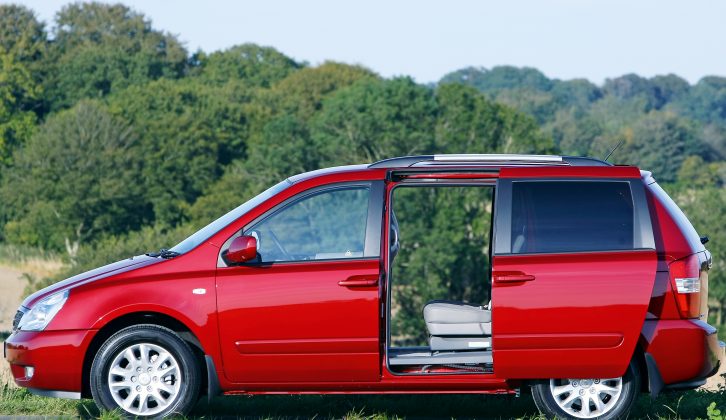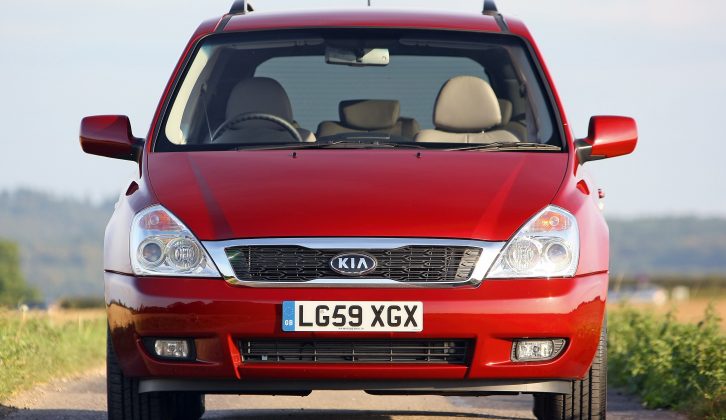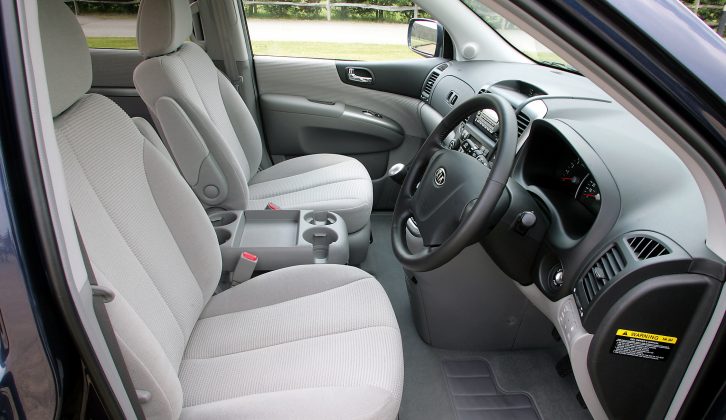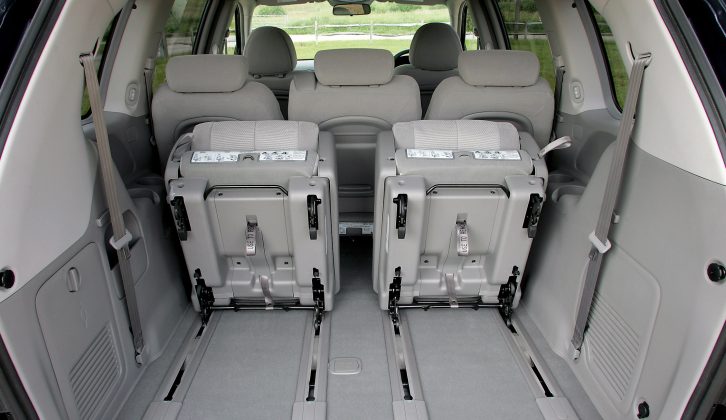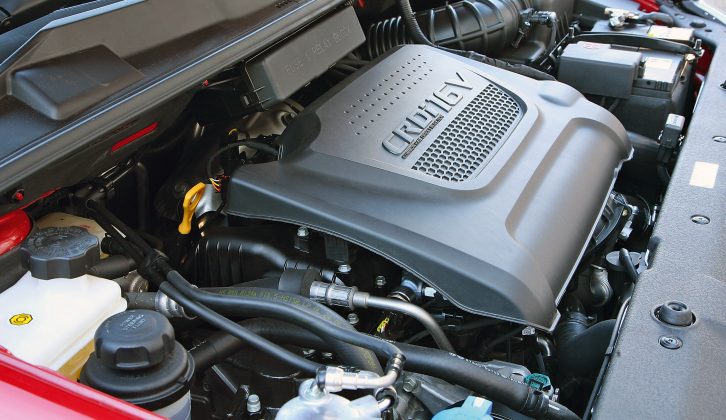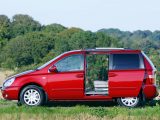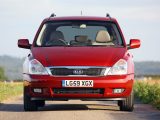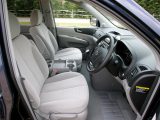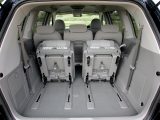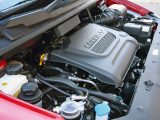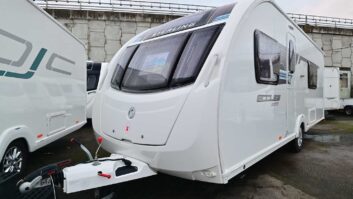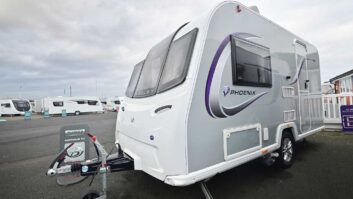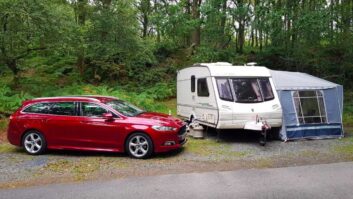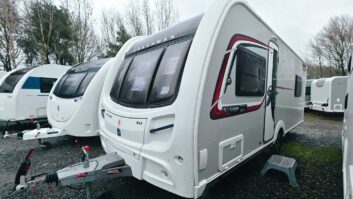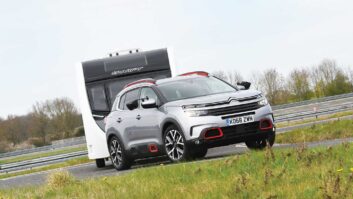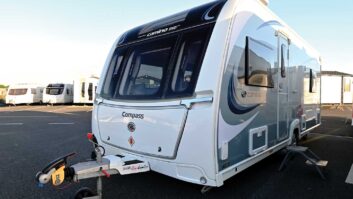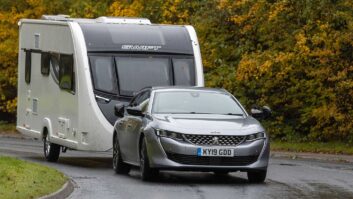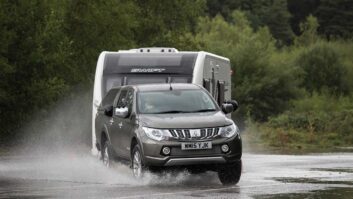Introduced to the UK in 2006, the second-generation Kia Sedona was taller and wider than its predecessor, but handily a bit shorter – the old one had been a pig to park in town.
Kia showed that it had listened to criticisms of the Mk1 by improving on it in just about every way that mattered. It was more pleasant to drive, had better kit, was built with superior materials and seemed to be screwed together better.
Both the petrol and diesel engines produced significantly more power, but were more refined, too. Suspension improvements included a multi-link independent set-up at the rear in place of the old van-style solid axle. This combined greater ride comfort with better towing stability.
Aside from that, the Sedona retained its goal of providing good value all along. It was a full seven-seater whose seats could all be folded or easily removed to create more boot space, and boasted rear sliding doors.
Of particular interest here is that the Sedona also bagged the Best MPV title in our 2010 Tow Car Awards, so we know it’s a winner in terms of what tow car ability it has. But what we all want to know now is how it is shaping up as a secondhand buy.
Model history
The Mk2 Kia Sedona was launched with a choice of two engines: a 2.7 V6 petrol with 186bhp and a 2.9 diesel with 1bhp less but, more tellingly, 253lb ft of torque compared to the petrol engine’s 184lb ft. All front-wheel drive, both were sold with a five-speed manual gearbox, although the diesel could be ordered with an automatic gearbox and slightly more than half of those sold here were.
The petrol unit was a dead duck in the showroom and only a handful were sold in three years. It was quietly laid to rest when the diesel engine was upgraded in October 2009. There were no mourners.
That new diesel engine was a cracker and surprisingly revvy for an oil-burner. Also, despite a significant capacity drop to 2.2 litres, it boasted more power at 192bhp and 310lb ft of torque – or 322lb ft if the automatic gearbox was ordered.
Both gearboxes now had six speeds which, along with the more-efficient engine, boosted economy figures to as much as 42mpg for the manual transmission; the auto could ‘only’ manage 37mpg – still impressive for a two-tonne seven-seater.
In both incarnations, the Sedona was offered in three trim levels: GS, LS and TS in ascending order until 2009, then simply 1, 2 and 3 thereafter. Even the lowest-level cars got air conditioning, six airbags and a CD stereo. The £2000 extra for LS or 2 trim added electric sliding rear doors, alloy wheels, triple-zone climate control, privacy glass and reversing sensors. The same premium again for TS/3 brought traction control, brake assist, heated front leather seats, cruise control and larger (17in) alloys.
Kia ceased production of the Sedona in 2012, but launched a Mk3 for the 2015 model year.
Trouble spots
Though it promises distinct economy benefits, any advantage the manual Sedona has at the pumps can be swiftly wiped out by its appetite for clutches. In heavy use, such as stop-start city driving or towing, these can last as little as 20,000-30,000 miles. If you’re still not put off, check the car’s history to see when it was last replaced, and feel for any signs of slippage during the essential test drive.
Also be alert to any heaviness or inconsistency in the steering. It’s by no means widespread, but there are reports of power-steering units failing after as little as 50,000 miles. More commonly, they tend to leak, which can lead to failure if not stopped. Even fixing that can set you back a couple of hundred pounds, so inspect around the rack for signs of fluid escaping.
Those sliding electric doors are perfectly fine on many Sedonas, but on others they can intermittently refuse to close. There’s no firm explanation for this yet, so try them out a couple of times to make sure you’re looking at one that performs as you’d expect.
None is well-behaved when it comes to brakes. These are heavy cars that would probably have benefitted from larger discs and/or pads. They stop perfectly well but use what they have to its limit; that’s why they go through pads and discs so quickly that replacement is pretty much part of each annual service, which adds to your running costs.
Other than that, the only regularly reported issues are electrical gremlins, so ensure that everything with a switch works as it should, including the heated seats and electric door mirrors where fitted.
Verdict
As a secondhand buy, the pre-2006 Sedona lived down to its price with more weak spots than a Plasticine chair. I’m pleased to report that its replacement is a vast improvement.
Prices are still keen, and Kia seems to have designed the car with large families and caravan towing in mind. We couldn’t find anyone with a harsh word to say against them on that score. As a cut-price alternative to a Ford S-Max or Renault Espace, the Sedona has a lot going for it.
Looking at the entire range, our top tug is the Sedona 2.2 CRDi 3 auto. The newer 2.2 diesels pull harder than the old 2.9s, but use less fuel. The auto is easy to use and that extra 12lb ft of torque is welcome for towing. It will be easier to sell on as well.
However, we’d steer clear of the 2.7 V6 variant. Unless you believe that diesel is responsible for the western world’s ills, there’s no reason to buy a petrol Sedona. Its 26mpg isn’t bad for an MPV this size, but it isn’t 35-37mpg.
What you need to know
In the used car market, you’ll find cared-for 2007 Kia Sedonas with average mileage from around £3000 for a GS, although those built after the first year of production seem to be of higher quality. In which case, the starting price is more likely to be £3750 for a GS with a £250+ premium to step up to an LS and the same again for the top-line TS.
Any 2.2 for under £8000 is probably black, high mileage and has spent its life to date as an airport taxi. If you find a cheap black one that hasn’t got a high mileage, it may have been clocked. Avoid these and spend your money on one with a solid history.
Here are some useful figures (for 2010 2.2 CRDi auto):
- Kerbweight 2025kg
- Towing limit 2000kg
- Towball limit 85kg
- 85% match 1721kg
How much is a towball? A Witter flange towbar will be £101.69, while a Bosal detachable towbar will set you back £178.14 (fitting extra), according to PF Jones.
And what about servicing? We asked Servicing Stop for quotes for a 2006-2012 Kia Sedona and were told that an interim service would be £130, a full service £205.
Kia seems to have designed the car with large families and caravan towing in mind
